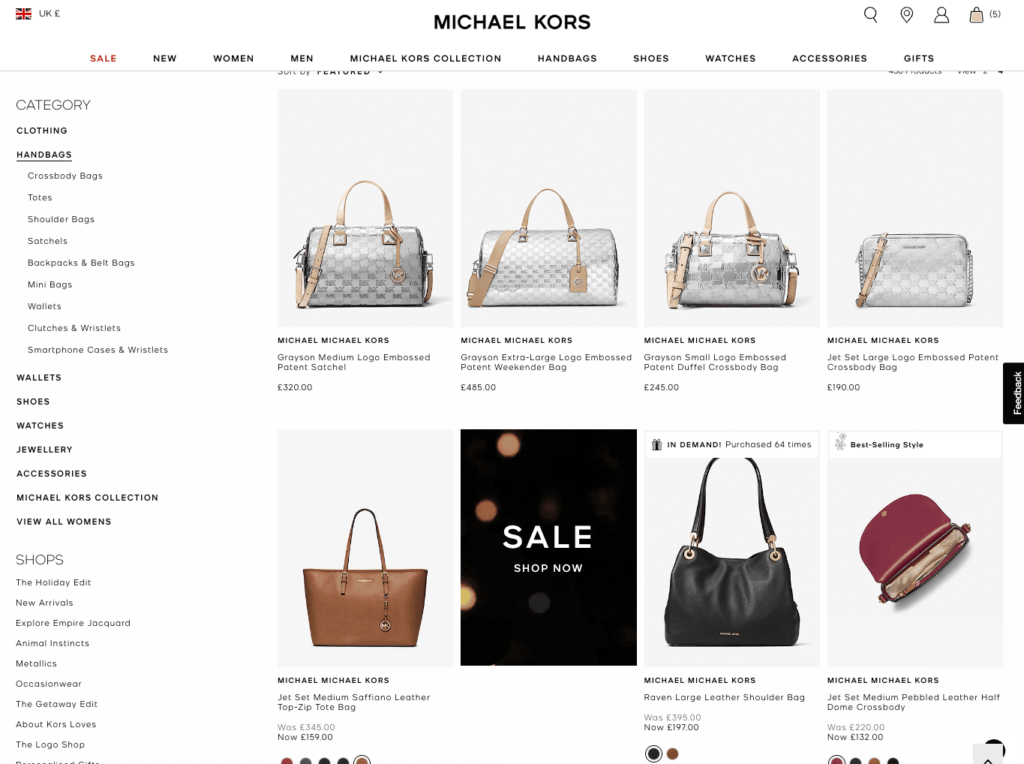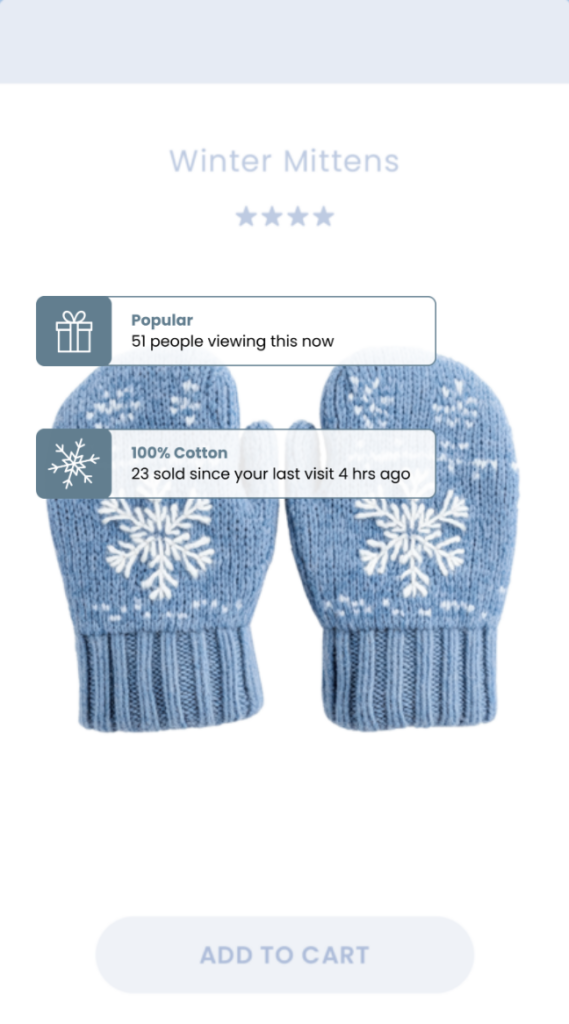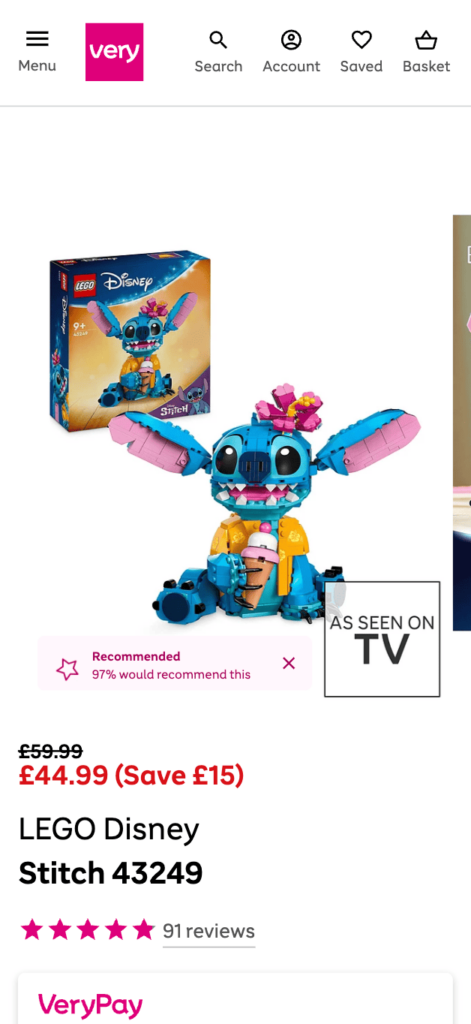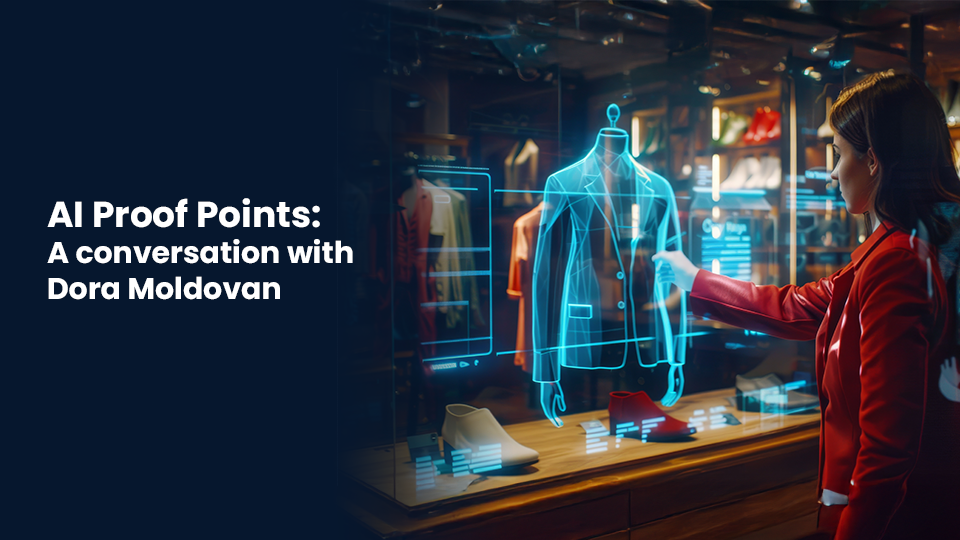“The most wonderful time of the year” – certainly, for many retailers and brands, it is the most profitable time of the year, accounting for up to 30% of annual sales revenue.
While the peak trading season used to kick off with Black Friday and Cyber Monday, this year, 68% of consumers are planning to do their gift shopping before the traditional peak season starts, which essentially means that peak has officially already begun.
While inflation and consumer cautiousness is currently impacting spending for a majority of consumers, according to a recent study, 80% plan to spend the same amount or more during the Golden Quarter. According to Statista, in 2024, the total value of retail sales during the peak season is estimated to reach £96bn in the UK, up from £93 billion in 2023, and 82% of consumers plan to split their peak season shopping between in-store and online.
This time of year brings increased competition among retailers as well as shifting consumer behaviours. This is the season of gift-giving, entertaining and dedicated celebratory budgets, and as such, the consumer decision-making process is slightly different, calling for a targeted and seasonal eCommerce strategy.
In this post, we will take a look at the consumer decision-making process and provide actionable recommendations for how to maximise eCommerce sales during this peak season.
Understanding the Consumer Buying Decision Process During the Peak Shopping Season
It is important for any business to understand the consumer decision-making process in order to develop and optimise acquisition, sales and retention strategies.
During the Christmas and peak trading season, each stage of the process is amplified due to heightened emotional, social, and financial pressures, as well as time constraints. Understanding the stages of the decision-making process allows you to craft more effective seasonal eCommerce strategies by aligning efforts for each stage of the consumer journey.
Here’s a breakdown of the five stages of the consumer decision-making process and specific influencers during peak trading:
- Problem Recognition (awareness): Consumers recognise a need or want. During the peak season, this stage is often triggered by gift-giving, entertaining or taking advantage of seasonal promotions.
- Information Search (research): Shoppers look for product options and compare alternatives. Shoppers tend to conduct more thorough searches, especially online, comparing prices, reading reviews, and seeking deals during this busy season.
- Evaluation of Alternatives (comparison): Shoppers compare product options to make the right choice. During the peak shopping season, this evaluation is more intense due to a sense of urgency, pressure to make the right decision and the overwhelming number of discounts and promotional offers.
- Purchase Decision (conversion): Shoppers decide to buy a product. The decision-making process is often quicker during the peak season, driven by time constraints, limited-time offers, and product scarcity.
- Post-Purchase Behaviour (re-purchase): After making a purchase, consumers evaluate their satisfaction – whether they will recommend the product or brand to others, whether they would buy again, and what feedback they would give.
Crafting a Winning eCommerce Strategy for the Peak Season
When planning and optimising for the peak shopping season, the first step is to make sure that the operational foundation is in place. That includes optimising inventory and supply chain and logistics, ensuring that site speed and load capacity are optimised to support increased traffic, and adding additional customer service capacity to handle increased volumes of inquiries.
The beauty of eCommerce is that it allows you to review data from previous peak seasons to understand customer behaviours and trends to help inform and craft your strategy. You can also more easily use customer data to create targeted segments and tailor specific offers and messaging to boost conversions.
While the peak shopping season may have already started for some, there are still things you can do to make the most of this high-traffic Golden Quarter. In the following, we will outline seven strategies for boosting peak performance with each of the five key stages of the decision-making process in mind.
- Use Emotional Appeal and Festive Themes
Emotional triggers and festive themes can significantly enhance eCommerce experiences, evoking feelings of joy, nostalgia, and urgency.
Festive themes, such as seasonal colours, imagery and messaging, create a sense of excitement and connection to traditions, making shopping feel more personal and meaningful. Retailers and brands can also add seasonal messaging to site elements, such as social proof messaging. In addition to resonating with shoppers, these themed messages help retailers deliver more dynamic experiences that capture shopper attention.

Triggers like limited-time offers or gift suggestions tap into urgency and the desire to give. These triggers help shoppers decide what to give and encourage quicker purchasing decisions.
By aligning visuals and messages with positive emotions associated with the season, brands and retailers can foster a welcoming atmosphere that resonates with customers, leading to more delightful shopping experiences.
2. Create Compelling Promotions and Offers
Over the years, the holiday season has become synonymous with promotions and discounted deals. Following the COVID-19 pandemic, economic downturn and cost-of-living crisis, customers’ expectations for seasonal discounts have only intensified. A recent study revealed that 70% of consumers ranked price range as the biggest factor influencing their purchase decision.
While many retailers choose to offer blanket discounts during this time to attract customers and increase sales, there are ways to create compelling promotions and offers that stand out without discounting the entire product assortment.
Time-limited discounts such as flash sales, limited-time offers and countdowns can create urgency and boost sales during this busy season. Retailers can also offer holiday bundles that maintain the average order value while giving customers a higher perceived value.
Loyalty programs can be used to reward returning customers with early access, exclusive discounts, or points multipliers during peak periods specifically to drive conversions and sales. At the purchase decision stage, retailers can leverage threshold messaging discounts to upsell and increase order value or nudge shoppers to complete a purchase with a promotional offer. And offer incentives to reduce cart abandonment rates, such as free shipping or further discounts.
3. Build Trust and Shopper Confidence with Social Proof
During the peak season, consumers often rely on the buying behaviours and experiences of others, especially when overwhelmed by numerous options, unfamiliarity with certain product categories on wish lists, the added pressure of giving the “right” gift, not to mention time constraints.
Leveraging real-time online data, social proof messaging helps shoppers make more informed decisions and provides a sense of urgency by showcasing popular and trending products based on how many people viewed, liked, added to cart or bought a product.
Online product reviews help shoppers evaluate product options and feel more confident that they are making the right gift purchase decisions. By combining social proof with review data, retailers can elevate relevant insights such as fit advice and quality and amplify the effectiveness of product reviews.
Supercharging traditional badge messaging, attribute messaging, highlights relevant product features, helping shoppers find the right products and make more informed decisions. Integrating social proof messaging into your peak strategy will lead to significant conversion rate uplifts and increased sales revenue.

4. Optimise the Mobile Shopping Experience
With more and more consumers relying on their mobile devices to both research and complete purchases during the busy season, it is paramount to ensure that your website is fully mobile-optimised. A poor mobile experience will lead to increased bounce rates, lost sales and revenue.
You can ensure that your site is mobile-friendly and responsive by optimising page load speeds, simplifying the checkout process, enabling convenient mobile payment options such as Apple Pay and Google Pay, ensuring that navigation is intuitive and using push notifications for special offers to target mobile users.
Retailers can also leverage SMS and popular mobile messaging applications such as WhatsApp for marketing, shopping assistance and customer service to make the shopping experience as seamless and convenient as possible for the ever-increasing number of mobile shoppers.
5. Offer Personalised Experiences and Relevant Product Recommendations
It is getting increasingly harder – and more expensive – for retailers and brands to drive qualified traffic to their sites – and even harder to convert traffic to sales. Every interaction matters, and consumers expect highly relevant and personalised shopping experiences. This is especially true during the peak season when consumers are shopping for multiple people and appreciate extra guidance.
By leveraging data-driven personalisation strategies, retailers and brands can better guide shoppers through the shopping journey and make their decision-making process that much easier. Proven tactics include implementing AI-powered product recommendations based on past purchases and browsing history, as well as highlighting the shopping behaviours of other shoppers through social proof.
To help with the gift-buying process specifically, retailers can offer gifting guides for different target audiences, interactive selling tools like quizzes and live or AI-powered chat to offer immediate advice and help shoppers make more informed buying decisions.

6. Offer Free and Fast Shipping
When it comes to peak season shopping, delivery times and shipping costs play a major role during the eCommerce decision-making process. Shopping for gifts for loved ones and entertaining during the festive season can be stressful enough without worrying about the timely delivery of gifts and hosting essentials.
Due to high shopping volumes, lead times are often longer than usual, and it is, therefore, critical to optimise fulfilment processes, partner with reliable delivery partners and share upfront communication to customers about order deadlines and delivery expectations. By offering next-day or same-day delivery, retailers can appeal to last-minute shoppers who are willing to pay extra to ensure that their gifts arrive on time.
Shipping fees also have a significant impact on the eCommerce decision-making process during peak trading. According to one survey, free delivery was more important to shopping decisions than speedy delivery – the survey found that free shipping was very or extremely important to 65% of respondents when making purchases for the season. While offering free shipping on all orders is not feasible for many retailers and brands, an alternative tactic is to offer free shipping as a promotion or with set thresholds to help increase conversions. Regardless of your approach, it is important to be transparent about shipping costs, as high hidden fees are more likely to lead to cart abandonment.
7. Create a Sense of Community and Giving Back
During the peak season, many consumers feel a strong sense of community and social responsibility. Brands and retailers that genuinely align themselves with charitable causes or promote sustainability often resonate more with shoppers, and these positive associations can influence their purchase decisions.
When US outdoor retailer REI Co-op in 2022 announced that it would close its 190 stores, fulfilment centres, call centres and headquarters on Thanksgiving and Black Friday and give all 15,000 employees the time off, it made waves in the industry. This yearly initiative is part of a movement that the company calls “opt outside” and has created a lot of goodwill, brand awareness and loyalty.

Retailers and brands can stand out by promoting causes that matter to their target audiences. For instance, if sustainability is important to your customers, offering eco-friendly products can positively impact a consumer’s decision to purchase. You can amplify your efforts and guide shoppers to the right products by highlighting eco-friendly product features with attribute messaging.
It isn’t just retailers and brands that can stand out by promoting causes that matter to their customers. At Taggstar, we are passionate about Giving Back and supporting initiatives close to our team’s hearts – it is part of our DNA.
It’s Not Too Late to Optimise your Peak eCommerce Strategy
During the Golden Quarter, there is a significant surge in shopping activity as consumers look for gifts, decorations, entertaining essentials, and other seasonal items.
Shopping tends to be more emotional and stressful than shopping during other times of the year, and therefore, the consumer decision-making process, customer journey, and factors that influence shopping behaviours change accordingly.
Retailers and brands must meet the unique needs of shoppers with eCommerce strategies and tailored messaging, promotions, product offerings and user experiences that align to every stage of the decision-making process.
By leveraging social proof and helping shoppers make better shopping decisions, retailers and brands like Debenhams, Fabletics and Steve Madden, deliver relevant customer experiences and maximise revenue during the critical peak trading season.
Join the growing list of leading global brands & retailers that trust Taggstar to elevate their shopping experiences and drive significant sales lift. Get started today.



